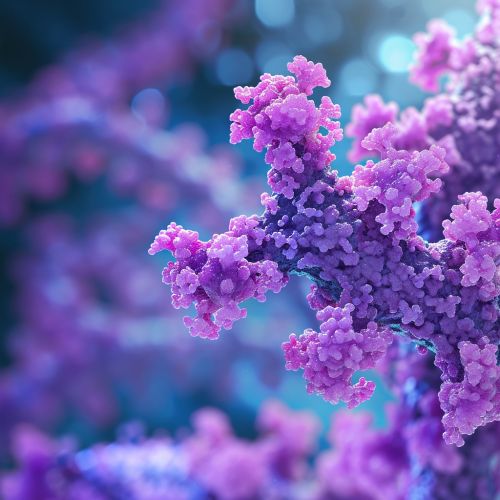Interleukin-3 receptor
Overview
The Interleukin-3 receptor (IL-3R) is a type of protein found on the surface of certain cells in the human body. It is part of a larger family of proteins known as cytokine receptors, which play crucial roles in the immune system's response to various diseases and infections. IL-3R specifically is involved in the growth and differentiation of hematopoietic stem cells, the cells responsible for the production of all other blood cells.


Structure
The IL-3R is a heterodimeric protein complex, meaning it is composed of two different protein subunits. These subunits are known as the alpha (IL-3Rα) and beta (IL-3Rβ) chains. The alpha chain is specific to the IL-3R, while the beta chain is shared with other cytokine receptors, including those for IL-5 and GM-CSF. This shared use of the beta chain is a common feature among the cytokine receptor family.
Function
The primary function of the IL-3R is to bind to its ligand, IL-3, a type of cytokine. Once IL-3 is bound to the receptor, it triggers a cascade of intracellular signaling events. These signals ultimately lead to the proliferation and differentiation of hematopoietic stem cells into various types of blood cells, including erythrocytes, leukocytes, and platelets. This process is vital for maintaining the body's immune response and overall health.
Clinical Significance
Abnormalities in the IL-3R can lead to a variety of health issues. Overexpression of the IL-3Rα chain, for instance, has been observed in several types of cancer, including acute myeloid leukemia (AML) and non-Hodgkin lymphoma. This overexpression can lead to uncontrolled cell growth, a hallmark of cancer. Conversely, a lack of functional IL-3R can result in immunodeficiency, as the body is unable to produce sufficient numbers of immune cells.
Research and Therapeutic Applications
Due to its involvement in various diseases, the IL-3R has become a target for therapeutic intervention. Several drugs that target the IL-3R are currently in development or clinical trials. These drugs work by either blocking the receptor, preventing IL-3 from binding and thus inhibiting cell proliferation, or by delivering a toxic payload to cells expressing the receptor, effectively killing the cancer cells.
